Wyeth's Lupine, Biddle's Lupine
Lupinus polyphyllus var. humicola
Synonyms: Lupinus arcticus var. humicola, Lupinus humicola, Lupinus rydbergii, Lupinus wyethii
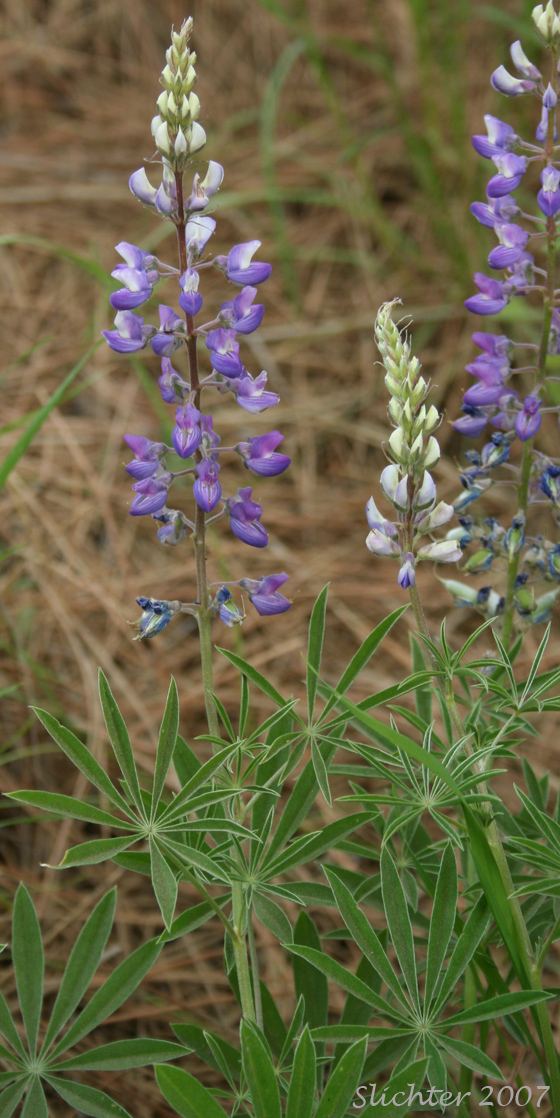
A view of the upper stem leaves and inflorescence of this lupine. The stem leaves tend to have narrower leaflets and are reduced in size upwards on the stem. The tips of the leaflets range from acute to acuminate. The stem leaves number from 5-8. The plants at this location were just beginning to bloom, and only a few had side branches capped with an immature inflorescence. All photos on this page (except where noted) were photographed in dry upland forest in Conboy Lake National Wildlife Refuge along Lakeside Road..........May 19, 2007. This species has also been seen in similar locations along the Willard Springs Foot Trail (Conboy Lake NWR) as well as north of Glenwood, WA.
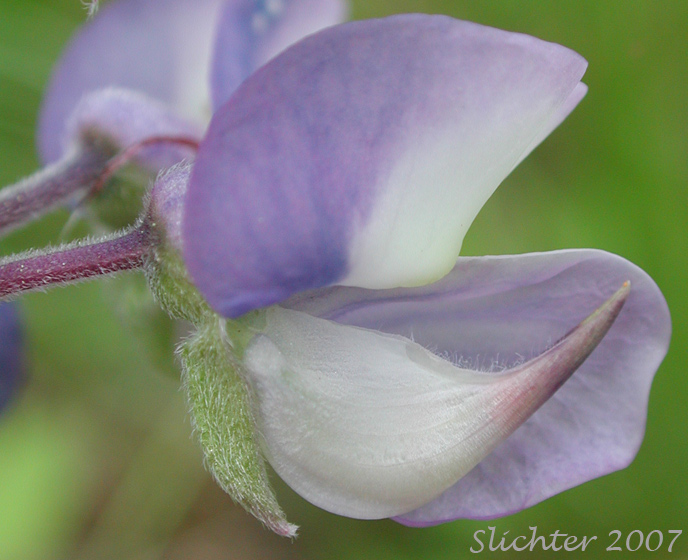 -
- 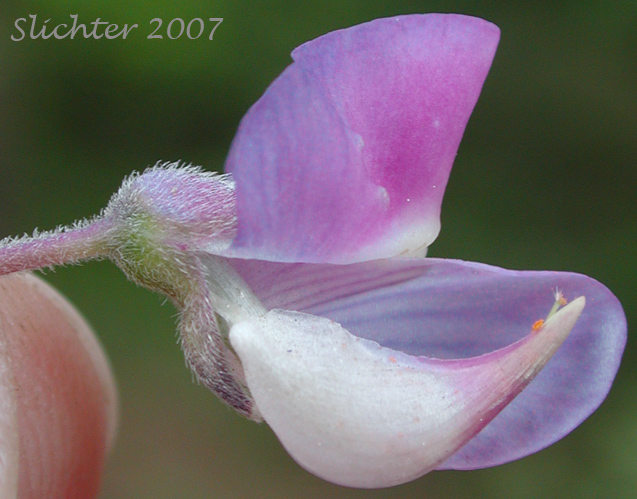
The two photos above show close-ups of the keel. The upper margin of the keel is often, but not always ringed with ciliate hairs as seen in the two photos.
Photographed in dry upland forest in Conboy Lake National Wildlife Refuge along Lakeside Road..........May 19, 2007.
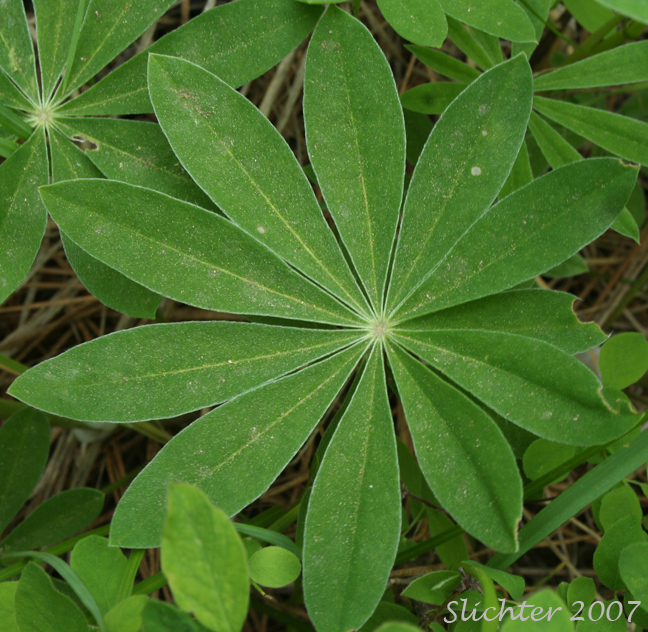
The photo above shows a basal leaf of this lupine. The leaflets are broadest towards the tip, but with the tip acute.
Photographed in dry upland forest in Conboy Lake National Wildlife Refuge along Lakeside Road..........May 19, 2007.

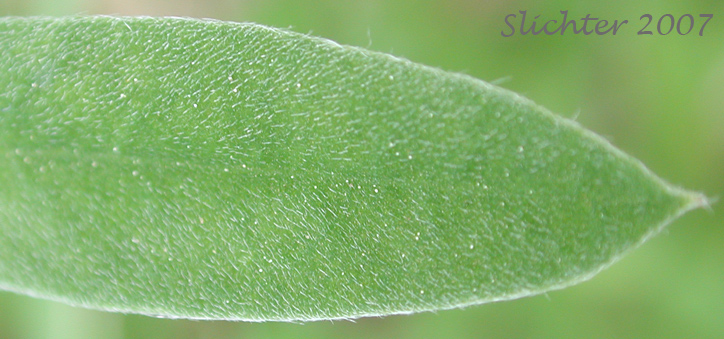
The two photos above show close-ups of the upper surface of the stem leaves of this lupine. Note the numerous hairs flattened against the leaflet and generally oriented forward and to the outside of the leaflet.
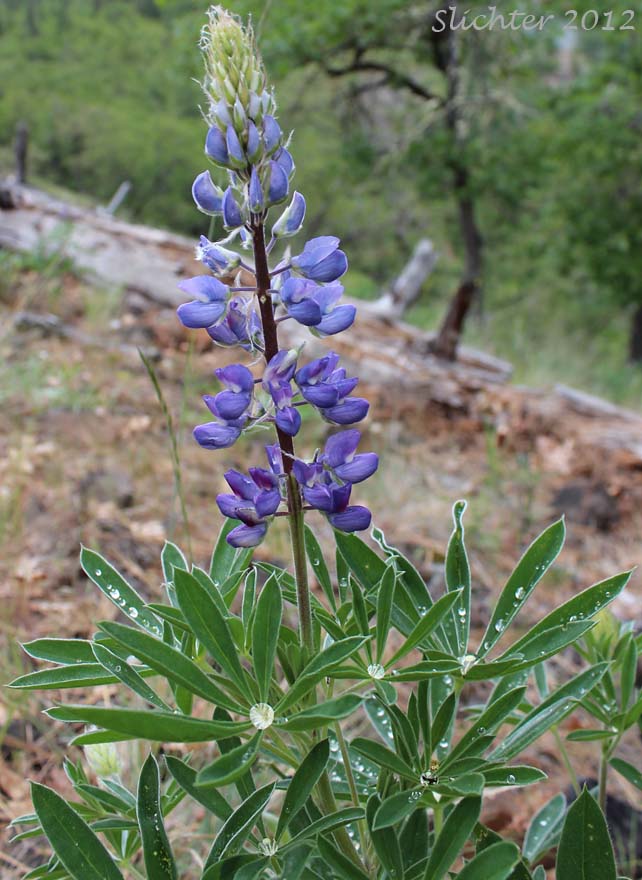 -
- 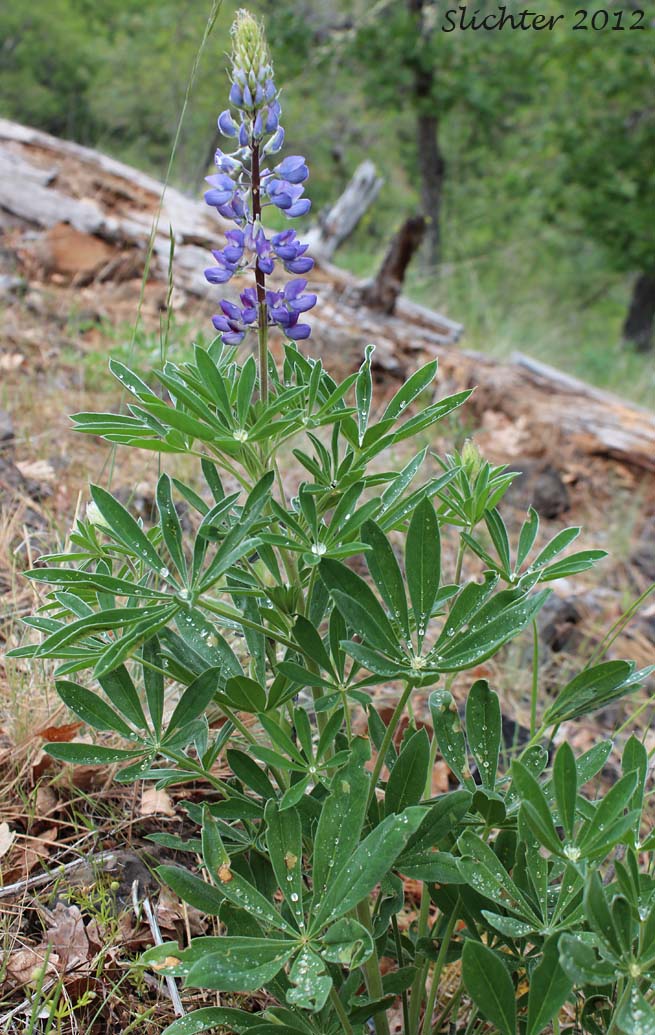 -
- 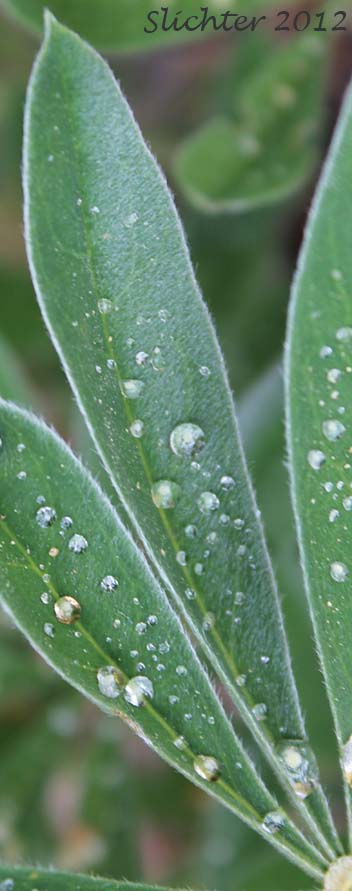
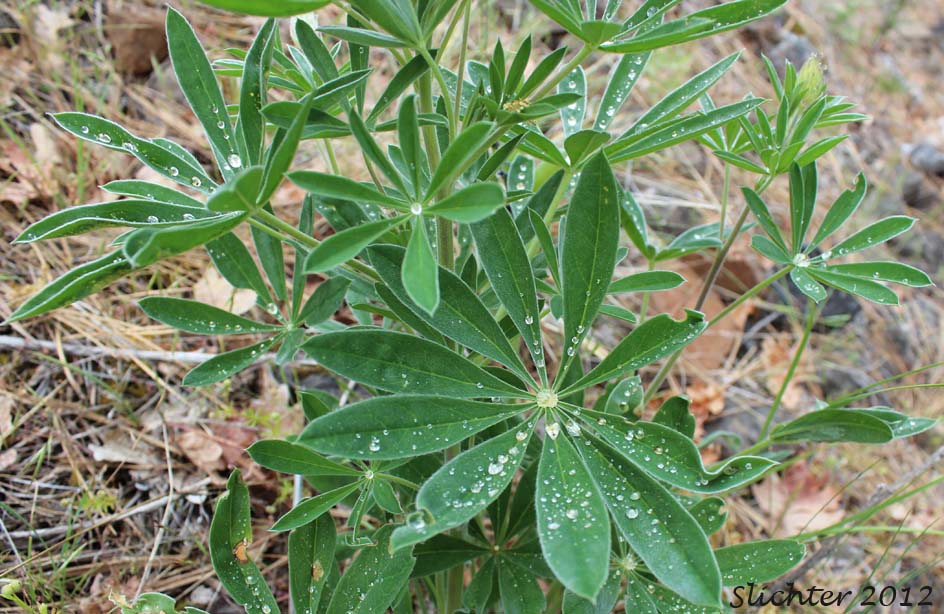
Close-ups of Wyeth lupine as seen on steep slopes high above the west side of the Klickitat River about 2 miles south of Leidl Park crossing.............May 20, 2012.
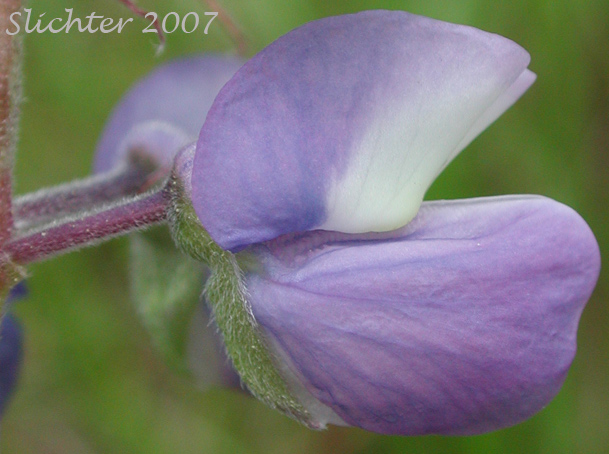
A close-up sideview of the banner and wings of this lupine.
Photographed in dry upland forest in Conboy Lake National Wildlife Refuge along Lakeside Road..........May 19, 2007.
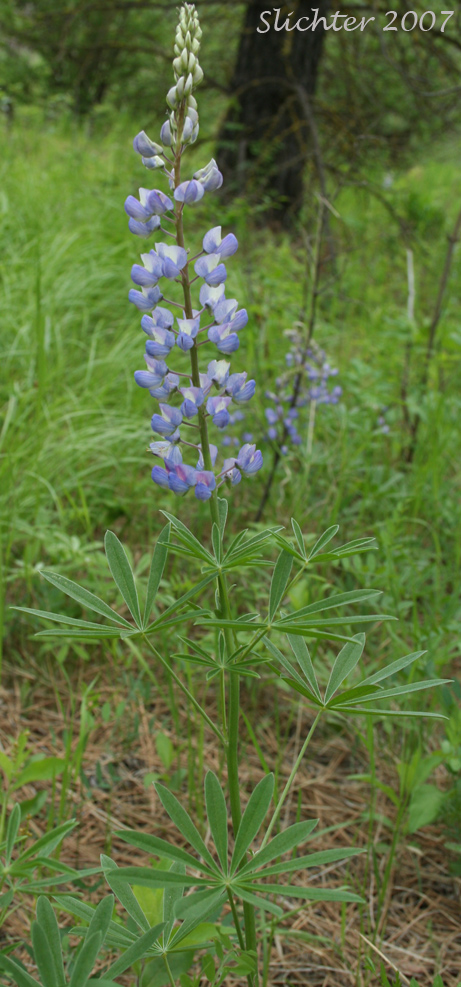 -
- 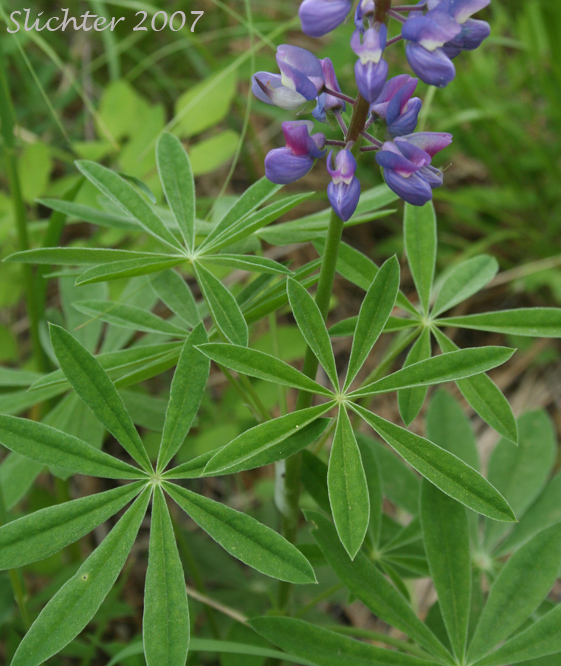
Photographed in dry upland forest in Conboy Lake National Wildlife Refuge along Lakeside Road..........May 19, 2007.
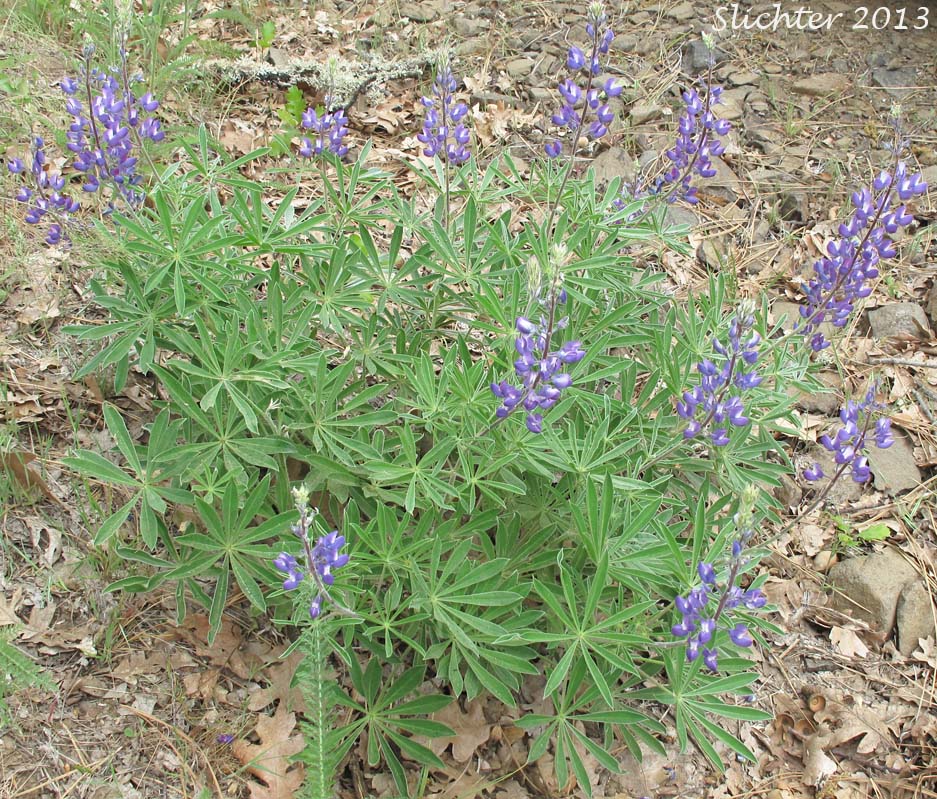 -
- 
What appears to be Wyeth lupine as seen in the Klickitat Wildlife Area............May 15, 2013.
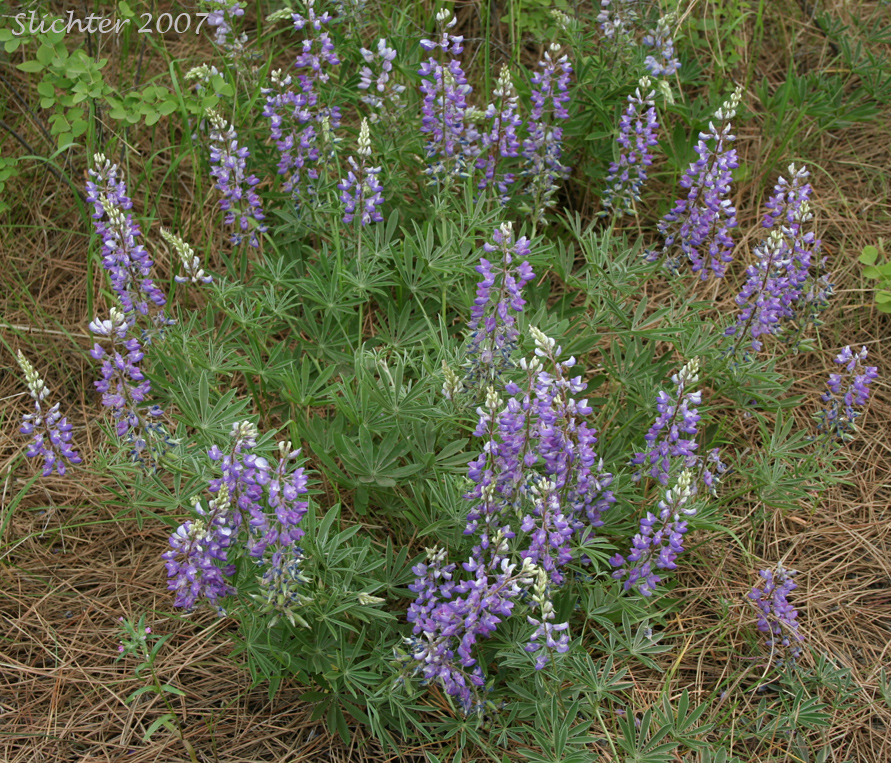
This appears to be more like Lupinus sericeus or Lupinus latifolius x sericeus due to the branched stems ending in racemes of flowers. The problem with lupines in the Columbia River Gorge and Klickitat Gorge is that different species can hybridize with each other, while there is enough transition in climate and elevation to see a cline or progression of traits across the range of each species.
